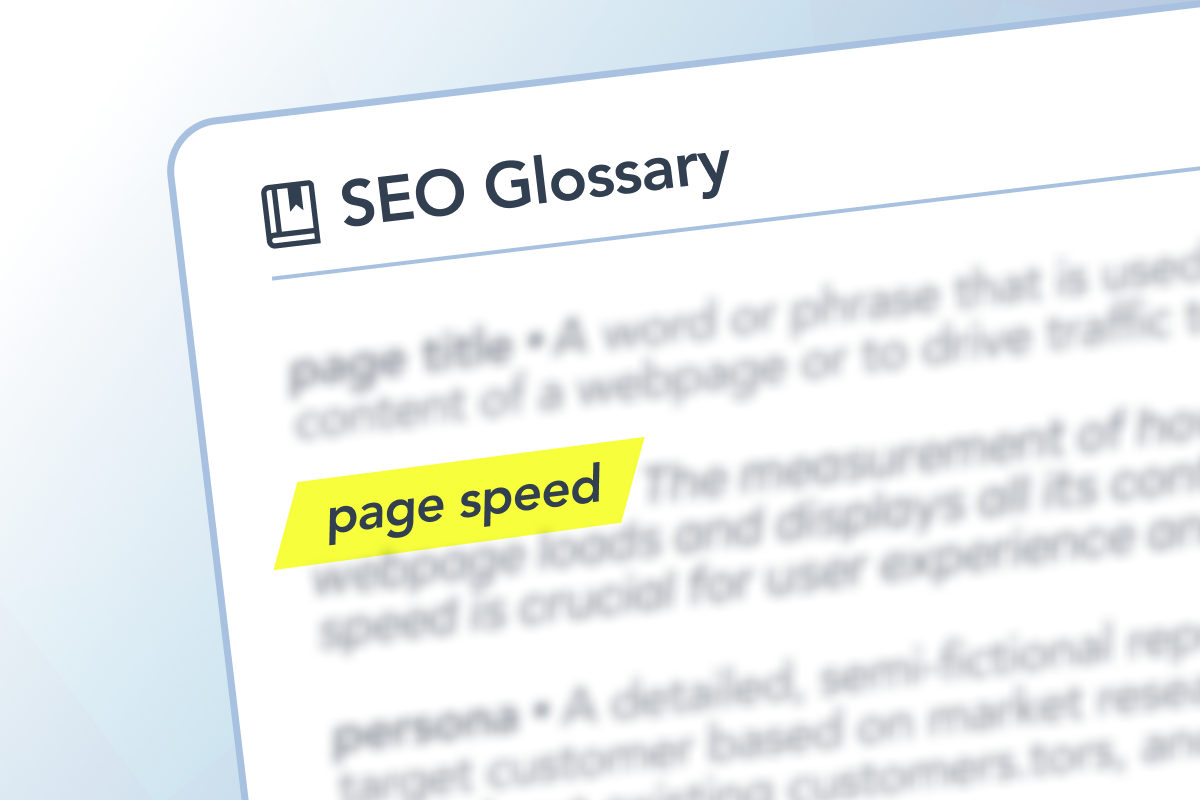Imagine you’re in a rush to buy the last ticket to your favourite band’s concert. You find the ticket site, but it loads so slowly that you’re stuck watching the loading icon spin.
By the time the page loads, the coveted tickets are sold out.
This frustration is similar to what users experience with slow-loading websites. In the world of SEO, page speed isn’t just about keeping your visitors happy; it’s crucial for your site’s visibility and user engagement.
What is page speed?
Page speed refers to how quickly content on your page loads. This can include everything from text and images to scripts and CSS. It’s a direct measure of the time it takes for someone to start interacting with your site after clicking a link or typing in your URL.
Why is page speed important for SEO?
Google and other search engines prioritize user experience, and a key component of that is how quickly a page loads. Here’s how page speed impacts your SEO:
- Higher search engine rankings: Faster websites are more likely to be ranked higher in search results. Google has explicitly mentioned page speed as a ranking factor, especially for mobile searches.
- Improved user engagement: Sites that load quickly have lower bounce rates. Users are more likely to stay on your site, engage with your content, and navigate to other pages if they don’t have to wait.
- Increased conversion rates: A fast-loading site provides a smoother experience for visitors, which can lead to better conversion rates, whether that’s signing up for a newsletter, making a purchase, or following a call to action.
Why is page speed important for users?
A fast site enhances the user experience in several ways:
- Immediate access: In today’s fast-paced digital world, users expect quick access to information. A slow page can make your site appear unprofessional or untrustworthy.
- Efficiency: Users are more likely to complete their tasks (like making a purchase or signing up for an event) if they don’t encounter delays.
- Satisfaction: Faster sites create a more enjoyable and less stressful experience, which can lead to higher user satisfaction and repeat visits.
Optimizing Page Speed
Improving your site’s loading time can be a game changer. Here are some strategies to accelerate your page speed:
- Optimize images: Use the correct image sizes and file formats. Consider tools that compress images without losing quality.
- Minimize HTTP requests: Reduce the number of elements on your page to decrease the number of HTTP requests required to load the page.
- Enable compression: Use software applications to compress your CSS, HTML, and JavaScript files that are larger than 150 bytes.
- Leverage browser caching: Store elements of your site in users’ browsers so that only new elements are downloaded on subsequent visits.
- Improve server response time: Look for performance bottlenecks like slow database queries, slow routing, or a lack of adequate memory and address them.
By focusing on these areas, you can make sure that your site isn’t just running; it’s sprinting towards better user engagement and higher SEO rankings.


